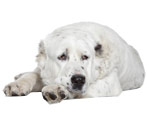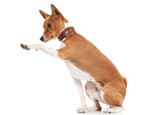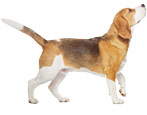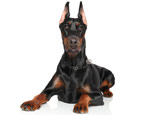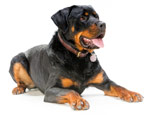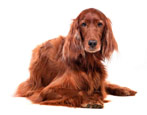How to clean your dog's ears at home?

To maintain the health of your furry friends, it is necessary to carry out hygienic procedures that animals are not able to perform on their own. Such a simple procedure as cleaning your ears at home can be done on your own, without the help of specialists. In this article, we will look at the basic rules for cleaning the ears in dogs, which will be required for this.

Why is the procedure needed?
If you ignore this simple procedure, serious problems with the ears can begin, which will not only bring a lot of pain and suffering to your pet, but also incur considerable material costs for treatment.
In other words, it is easier to save than to restore. It is best to teach a puppy to this procedure from a very young age. This is easiest to do when raising a baby. A puppy is easier to get used to this procedure than an adult dog.

Cleaning frequency
Many people wonder how often a dog's ears should be looked after. This should be necessary, especially for breeds with short ears. The reason for this is the protective function (in small quantities) of ear discharge from dirt, dust, water, temperature changes and other similar factors. Make sure this procedure is necessary before cleaning. Climbing into your dog's ears too often is undesirable.
For long-haired dogs with hanging ears, regular brushing is necessary. This is due to poor ventilation of the auricle. In hot weather, it is advisable to carry out such a procedure every other day.While short-haired dogs need to be cleaned much less often. Much depends on the age and where the pet lives.

Over the years, ear discharge increases and cleaning needs to be done more often. Living at home, ears get dirty less often than their street counterparts.
If there is a large amount of wax in the ears, it must be carefully removed immediately. Therefore, it is necessary to regularly carefully consider how much secretions have accumulated in the shells. The inner part of the auricle is covered with fine hairs, which, in compatibility with ear secretions, prevent microbes from entering. If you brush too often, these hairs are crushed and cannot perform their duties. Some dog breeds do not need this procedure for years and there are no problems.
In addition, long hair can grow inside the ear itself. Over time, these hairs die off and clog the ear canal. Loose hair should be removed with tweezers.

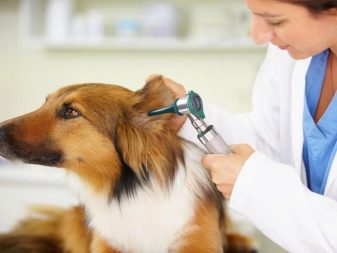
This procedure is completely painless for the pet, except for the discomfort of tickling.
How do you know if it's time to clean your ears?
Regular examination of the dog's ears should become a habit with the owner. This allows early detection of diseases and pathological changes. When examining the inside of the auricle, you may encounter the following:
- redness;
- excess discharge;
- swollen areas;
- unpleasant smell.
These signs indicate the presence of infection or the onset of the disease, as well as the need to take measures to eliminate them.
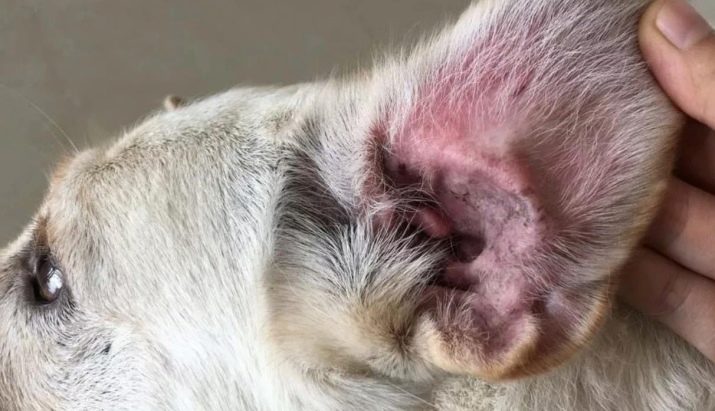
If serious inflammation is active, purulent deposits or swelling are noticeable, then you should go to the veterinarian as soon as possible.
Necessary tools and tools
All the tools and devices necessary for the described procedure can be purchased at a veterinary pharmacy.
- Wet wipesmoistened with a liquid to dissolve contaminants. The product must be suitable for sensitive skin so that the animal does not feel discomfort during treatment and irritation does not appear.
- Cotton budsalso moistened with ear care solution.
- Ear lotionshaving moisture-absorbing properties. They will not only dissolve the dirt, but they will also help remove dirt from your ear. These products can dissolve even hardened deposits without any discomfort for the dog.
- Cleaning powder. This product absorbs excess moisture, which prevents the spread of fungi. It also improves ventilation of the auricle.
Many are interested in the question of whether it is possible to treat a dog's ears with hydrogen peroxide at home. Suitable for 1-2 applications, but in the future you still need to use special means. Peroxide is injected into the ear using a syringe without a needle or syringe.



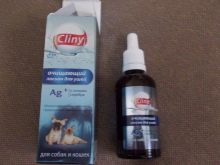
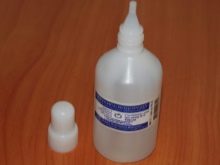
One ear - about 3-5 ml of the product. Peroxide does a good job of removing bad odors.
Important! In addition to the above mentioned funds, you can use the "Chlorhexidine" solution.

This is a herbal tincture of marshmallow root, burdock, lavender, sea salt and chamomile. Never use shampoos, oils, alcohol, or vinegar to wash your ears.
Dog preparation
Not every animal will immediately agree to such a procedure, so it needs to be prepared. First, the animal should be reassured. When the dog does not tolerate manipulation of the ears, you can wear a muzzle. It is advisable to carry out this procedure in a familiar territory for the pet so that it is not distracted by extraneous sounds and smells. The more calmly the pet honors himself, the easier it is for the owner to work with him. Otherwise it will be very problematic to clean it well.
Show the animal all the items that you will use. Let them smell, make sure they are completely safe. After that, fix your head in a stationary position.... Hold it neat and tight but not to the pain of the dog. This can scare him greatly.
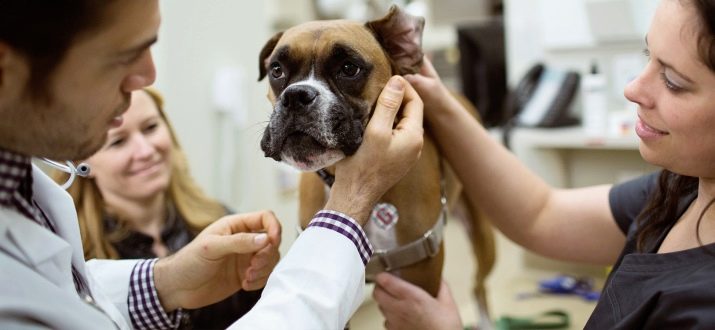
If the patient is small, you can place him on the table for convenience.
If a dog has not been accustomed to hygiene procedures since childhood, then in adulthood this can be a problem. Each time the owner will face fierce resistance. To avoid this, you will have to accustom the dog to this for a long time. Every time he wants to leave, he does not need to be stopped, the animal should feel free and understand that they are not trying to harm him. Realizing this, the animal will endure this procedure longer and longer each time.
A lot depends on the breed of the dog. For example, Terriers are much more difficult to train to clean their ears than others.

At the end of this procedure, give the patient a treat for his diligence and patience.... The treat will be remembered by him, next time the procedure will be a little easier. Over time, the pet will understand that there is nothing wrong with this, and the absence of coercion and a treat at the end will help to quickly get used to this event.
Step-by-step instruction
Many owners are wondering how to properly clean a dog's ears at home. This procedure should be carried out with the utmost care and comfort for the dog. In this case, the dog will not resist and interfere. One awkward movement can hurt your pet, in the future he will not agree to repeat this procedure.
Before starting the process itself prepare your pet mentally so that it is not tense and resisted... A conversation with your pet will help in this, during which you can examine the ears. Needed, hSo that the pet is in a good mood, does not worry and does not break free.

If the dog is too active or worried about something, it is better to postpone the procedure for a while.
If everything is in order, you can proceed by adhering to the following algorithm:
- soak a cotton pad with lotion and wring it out, gently wipe the outer part of the ear; you can replace a cotton pad with gauze by winding it around your index finger and moistening it with a solution; then we wipe the ear;
- with a cotton swab dipped in lotion, we process the inside of the ear, without sinking deep into the ear canal;
- at the end of the procedure, wipe the treated surface with a damp cloth;
- after a preliminary examination and approval of the veterinarian, a solution is poured into the ear to soften too dense sulfur deposits; after that, you need to wait until the solution soaks the sulfur, after which you need to rub the dog's ear with massage movements for several minutes; the dirt that comes out of the ear is then collected with a damp cloth.
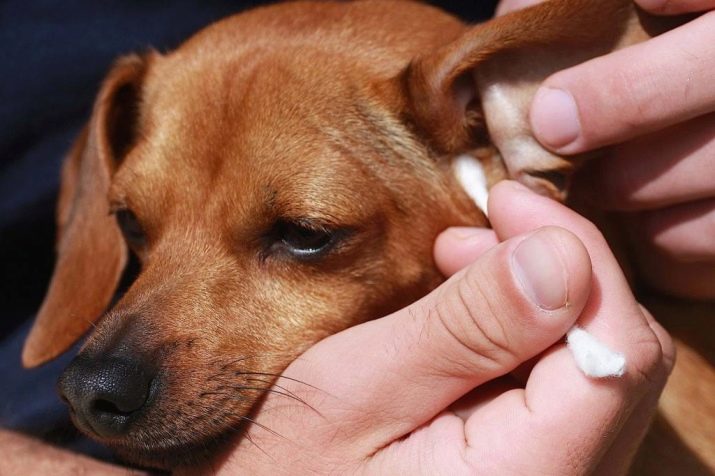
Important! After the end of the procedure, the animal will shake its head and ears. This is normal.
Thus, the pet gets rid of excess fluid in the ears. Then wipe your ears again with a damp cloth.
What is not recommended to use?
In order not to make terrible mistakes and not injure the hearing organs of your pet, you need to know and follow the following simple rules:
- Never insert ear sticks into the ear canal, as this can lead to hearing loss in the animal;
- never pour water into the dog's ears, as this can lead to inflammation if it flows into the ear canal;
- if there is an inflammatory process in the ear, it is forbidden to use hydrogen peroxide and alcohol solutions;
- do not use cotton wool dry - the fibers stuck in the ear can lead to a constant itching sensation, which will cause the pet to constantly scratch the ear;
- use only disposable materials, discard after use, do not reuse them under any circumstances;
- If your pet has ear inflammation or soreness, consult a specialist - they will help you find the best way to treat it.

By adhering to these recommendations, ear cleaning will be painless, effective and efficient. If you doubt your strengths and skills or are afraid to harm your pet, the right decision would be to seek help from specialists.For the first time, you can see how this happens, and only then independently carry out this procedure. Hearing organs are very important for your pet's life, it is unacceptable to injure them.
For how to properly clean your dog's ears, see below.


